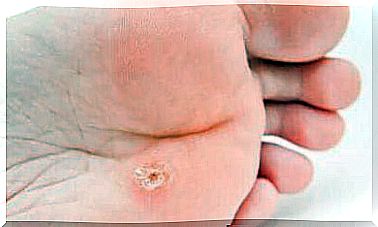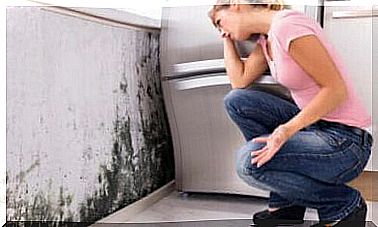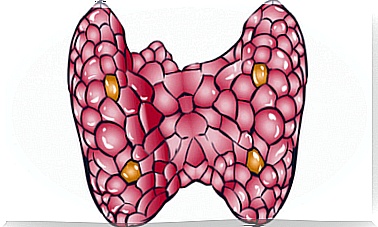Exercises For Scoliosis In The Spine
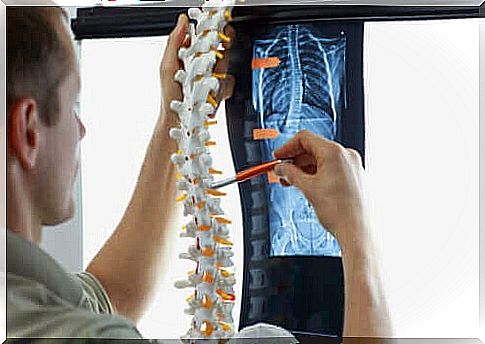
Not all exercises are suitable for people with scoliosis. Part of the treatment consists of physical activity, but it should be moderate and adapted to the specific needs of each individual. Remember that it is wise to have professional supervision whenever possible.
Scoliosis, or skewed back, are skews in the spine that are so large that they interfere with posture. It often occurs during the growth period, before puberty. However, it can also affect adults, especially women.
According to information from the National Institute of Arthritis and Musculoskeletal and Skin Diseases (NIAMS) , the curvature is usually C- or S-shaped and can occur on both sides or different places of the spine. What you may be wondering is how to exercise in these cases. Read on to find out.
Exercises you can do if you have scoliosis
Any form of physical activity that requires too much effort has probably already been discouraged if you have scoliosis. However, this does not mean that you have to end up in a sedentary lifestyle or give up exercising.
In an article from Cochrane library has been collected specific exercises that can help people with scoliosis. The best part is that you can do them both at home and at the gym.
These exercises help to strengthen the muscles that surround the spine, whose function is to stabilize the body. In turn, they alleviate the symptoms of this condition, such as the feeling of pressure and pain. Are you ready to start?
1. Pelvic lift
Pelvic lift, also known as the “bridge”, is one of the exercises you can do if you have scoliosis. It requires no specific machines and you can adjust the intensity according to your physical capacity.
A study published in The Journal of Physical Therapy Science found that this exercise helps strengthen the abdominal muscles, which in turn contributes to the rehabilitation of patients with poor back stability and low back pain.
This is what you do
- First, lie on your back with your knees bent and your feet flat on the floor.
- Then tighten your stomach while still making sure to keep your back flat on the floor.
- Lift the pelvis to the ceiling and hold for 5 seconds.
- Then lower it again and do 2 sets of 10 repetitions.

2. Arm and leg lift
Exercises that strengthen the lower back are ideal for rehabilitation in people with scoliosis. You can therefore include arm and leg lifts in your exercise routine if you have this condition.
According to a study published in the Journal of Exercise Rehabilitation, this activity is useful for strengthening the stabilizing muscles of the lower back. It also seems to be good as a supplement to reduce fatigue in the back.
This is what you do
- First, lie on your stomach on the floor.
- Then stretch your arms past your head and keep your palms flat on the ground.
- Make sure your legs are straight and lift one of your arms off the ground from this position. Lift the opposite leg at the same time.
- Hold the position for 1 or 2 breaths, lower yourself to the floor and repeat the exercise with the opposite arm and leg.
- Do about 15 repetitions on each side.
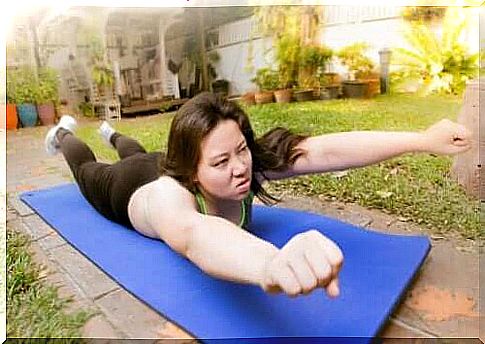
3. Lifting kettlebells
At most gyms you will find free weight balls, or kettlebells as they are called in English. They have become popular because of the many health benefits they provide. They are especially good for training lateral muscles and abdominal muscles, which helps stabilize the body.
Different movements with them make us use different muscle groups. In turn, this contributes to better coordination and increased resistance and balance. This is very good for people with scoliosis.
This is what you do
You can find these weights in different sizes. Ideally, you should not exceed 9 kilos if you have scoliosis. In fact, it is best to consult a professional, as the weight you can lift may vary depending on your particular case.
- This classic exercise requires a single free weight ball. Place it between your knees and lift it over your head in one motion. Be sure to keep your back straight.
- Do 2 sets of 10 to 12 repetitions each.

3. Stomach pressure
It to work on the core, ie the area covering the entire abdomen and the lower back, promote the rehabilitation of patients with leaning back. Abdominal pressure is an exercise that fulfills this function: in fact, it helps to improve your posture.
This is what you do
- First, lie on your back with your knees bent and your feet on the floor.
- Keep your back in a neutral position so that you do not feel the tension.
- Then lift both legs so that they are at a 90-degree angle.
- Now use your hands to press your knees down while tightening your abdominal muscles, while your knees press against your hands, so that you do a static exercise. Simply put, neither your legs nor your arms should move when you push: they just have to push each other so that they tighten your stomach.
- Hold this position for three full breaths and relax.
- Then do 2 sets of 10 repetitions each.
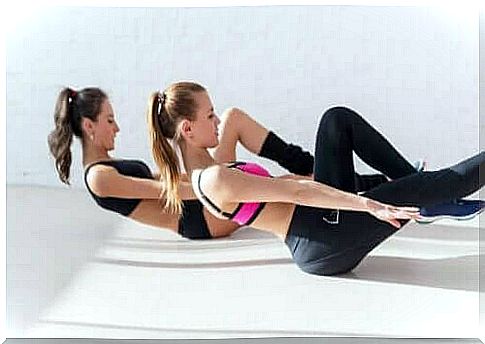
5. Short crunches with a yoga ball
This exercise strengthens the abdominal and lumbar muscles. Thus, it is one of the exercises you can practice if your spine is skewed.
This is what you do
- First, lie on your back on the yoga ball.
- Then make sure the ball is under your back and your feet on the ground, hip-width apart.
- Place your hands behind your head, and from this position, tighten your abdomen and lift your upper body.
- Then turn your chin towards your chest, lower yourself in a steady motion, and repeat.
- Do 2 sets of 15 repetitions each.

Exercises that aggravate scoliosis
Although the above exercises can improve scoliosis, there are other activities that increase the risk of further injuries or more severe symptoms. Among them we find:
- Hockey
- Football and American football
- Gymnastics and ballet
- Jumping on a trampoline
- Long-distance running on hard surfaces
- Heavy weightlifting (bodybuilding)
- Horse riding
Professional guidance is important when doing exercises for scoliosis
The symptoms of scoliosis vary from patient to patient. Therefore, consult your doctor if you think you may have this condition. Be aware that symptoms often improve by taking certain measures and exercising properly. However, some cases require other treatment, such as physiotherapy, medication and surgery.
Ultimately, moderate exercise is recommended as part of the rehabilitation process. Activities that strengthen the core are usually the most suitable in these cases. Regardless, get advice from a professional trainer at the gym. This is because carrying out the exercises in the wrong way can work against its purpose.


